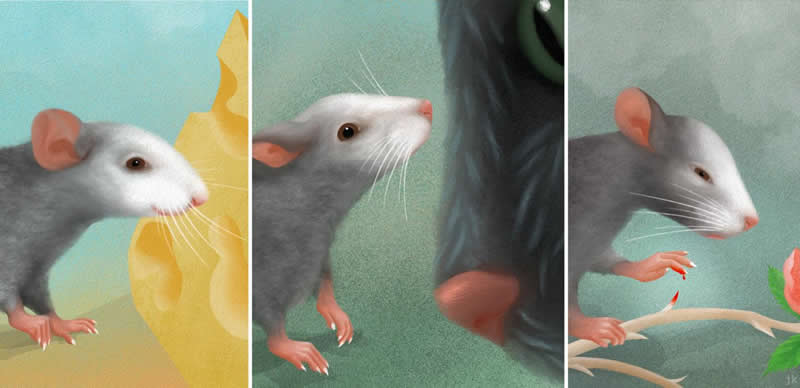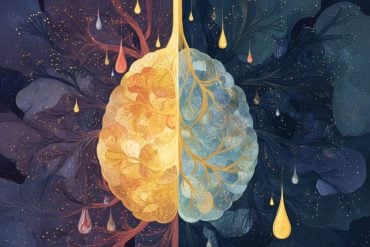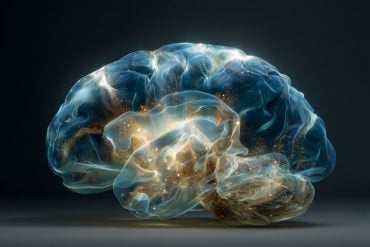Summary: Mouse show different facial expression depending on their emotional state. Using machine learning, researchers were able to link five different emotional states to the facial expressions of mice.
Source: Max Planck Institute
Researchers at the Max Planck Institute of Neurobiology are the first to describe different emotional facial expressions for mice. Similar to humans, the face of a mouse looks completely different when it tastes something sweet or bitter, or when it becomes anxious. With this new possibility to render the emotions of mice measurable, neurobiologists can now investigate the basic mechanisms of how emotions are generated and processed in the brain.
Pleasure, disgust, fear – the facial expressions that reflect these emotions are the same in every human. For example, if we are disgusted by something, our eyes become narrower, our nose wrinkles, and our upper lip distorts asymmetrically. Even newborn babies react with distinct facial expressions when they are sad, happy or disgusted. We also think to recognize feelings in the facial expressions of our pets. In contrast, the faces of other animals can appear expressionless to us. This is wrong, as the Max Planck scientists now show.
Using machine vision, the researchers were able to reliably link five emotional states to the facial expressions of mice: pleasure, disgust, nausea, pain and fear were clearly distinguishable for the computer algorithms. They could even measure the relative strength of these emotions.
Joyful expression
The study shows that the facial expression of a mouse is actually not just a reaction to the environment. It reflects the emotional value of the trigger. “Mice that licked a sugar solution when they were thirsty showed a much more joyful facial expression than satiated mice,” explains Nadine Gogolla, who led the study. Meanwhile, mice that tasted a slightly salty solution showed a “satisfied” expression, while a very salty solution led to a “disgusted” face. From these and other experiments, the researchers conclude that, uncoupled from the sensory stimulus, facial expressions actually reflect the inner, individual character of an emotion.

Emotions, however, are not simply a reaction to an external stimulus – they arise through mechanisms in the brain itself. The researchers thus investigated next, how neuronal activity in different brain regions affects the facial expressions. The neurobiologists were able to evoke different emotional facial expressions when they light-activated specific brain areas known to play a role in emotional processing.
Mechanisms behind emotions
The main benefit of the discovery of mouse facial expressions is that it is now possible to identify mechanisms giving rise to emotions. This, so far, was precisely the problem: without a reliable measurement of emotions, it has been difficult to study their origins in the brain. “We humans may notice a subtle facial change in the mice, but we can only recognize the emotion behind it with a great deal of experience and can hardly ever determine its intensity,” says Nejc Dolensek, the study’s lead author. “With our automated face recognition system, we can now measure the intensity and nature of an emotion on a timescale of milliseconds and compare it to the neuronal activity in relevant brain areas.” One such brain area is the insular cortex, which is associated with emotional behavior and the perception of emotions in animals and humans.
When the scientists measured the activity of individual neurons using 2-photon microscopy and simultaneously recorded the emotional facial expressions of the mouse, something astonishing came to light: individual neurons of the insular cortex reacted with the same strength and at the exactly same time as the mouse’s facial expression. In addition, each individual neuron was linked to only one single emotion.
These results suggest the existence of “emotion neurons”, each reflecting a specific sensation – at least in the insular cortex. “By recording facial expressions, we can now investigate the fundamental neuronal mechanisms behind emotions in the mouse animal model,” explains Nadine Gogolla. “This is an important prerequisite for the investigation of emotions and possible disorders in their processing, such as in anxiety disorders or depression.”
Source:
Max Planck Institute
Media Contacts:
Stefanie Merker – Max Planck Institute
Image Source:
The image is credited to MPI of Neurobiology / Kuhl.
Original Research: Closed access
“”Facial expressions of emotion states and their neuronal correlates in mice”. Nejc Dolensek, Daniel A. Gehrlach, Alexandra S. Klein, Nadine Gogolla.
Science doi:10.1126/science.aaz9468.
Abstract
Facial expressions of emotion states and their neuronal correlates in mice
Understanding the neurobiological underpinnings of emotion relies on objective readouts of the emotional state of an individual, which remains a major challenge especially in animal models. We found that mice exhibit stereotyped facial expressions in response to emotionally salient events, as well as upon targeted manipulations in emotion-relevant neuronal circuits. Facial expressions were classified into distinct categories using machine learning and reflected the changing intrinsic value of the same sensory stimulus encountered under different homeostatic or affective conditions. Facial expressions revealed emotion features such as intensity, valence, and persistence. Two-photon imaging uncovered insular cortical neuron activity that correlated with specific facial expressions and may encode distinct emotions. Facial expressions thus provide a means to infer emotion states and their neuronal correlates in mice.






